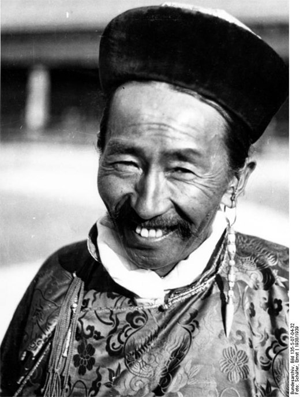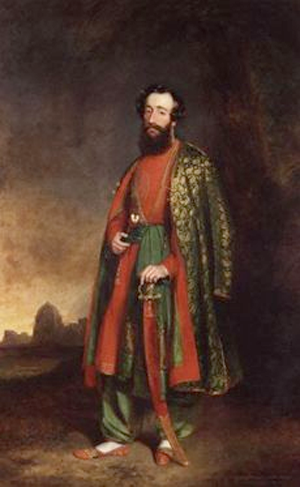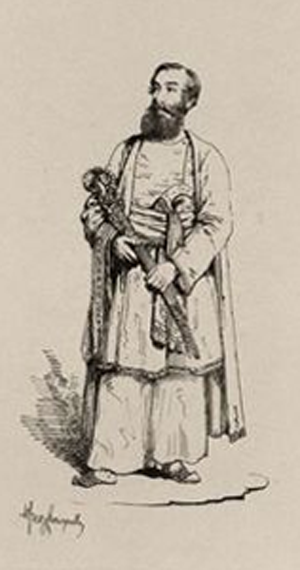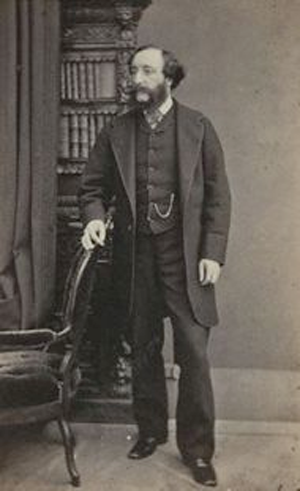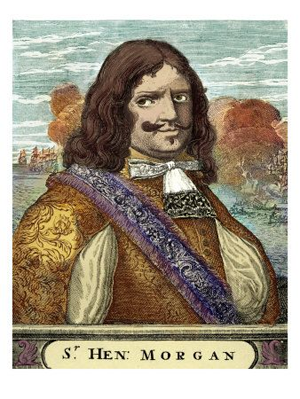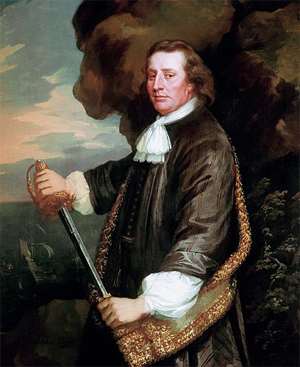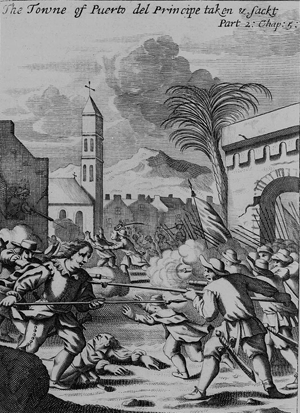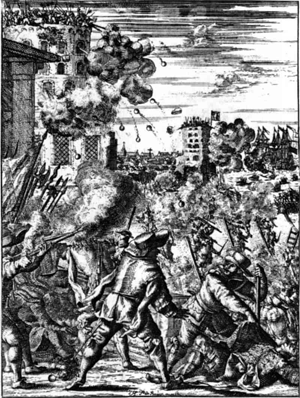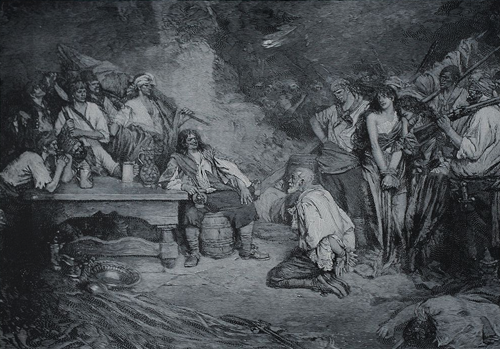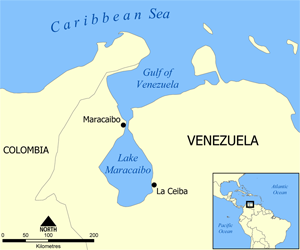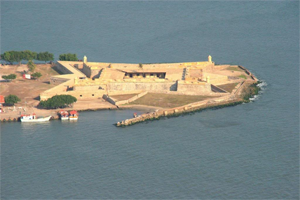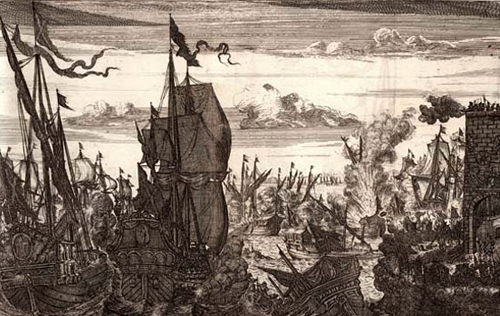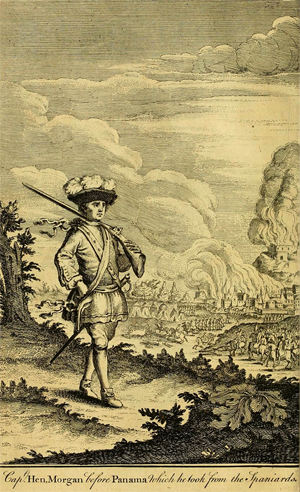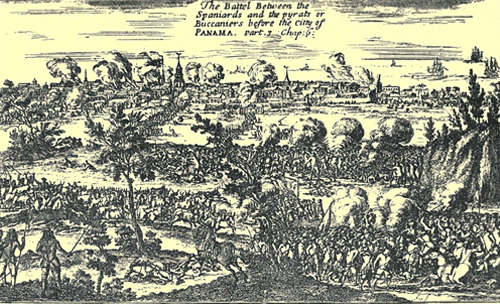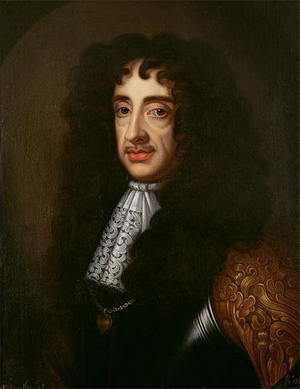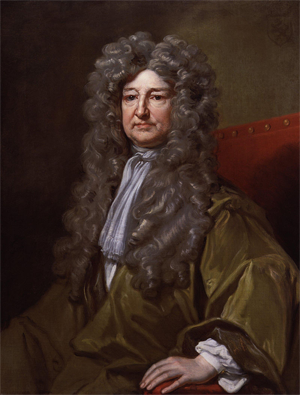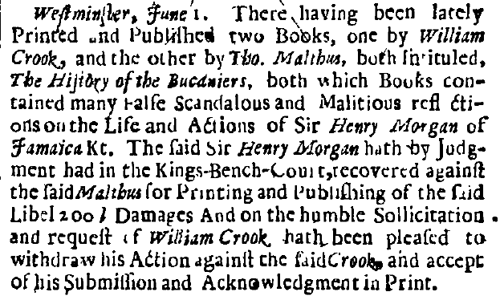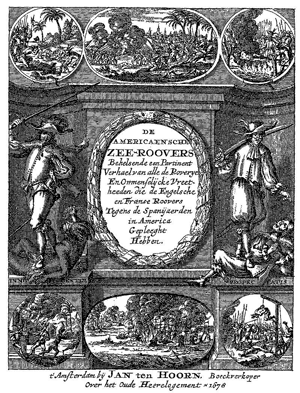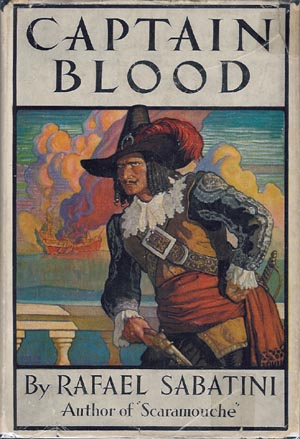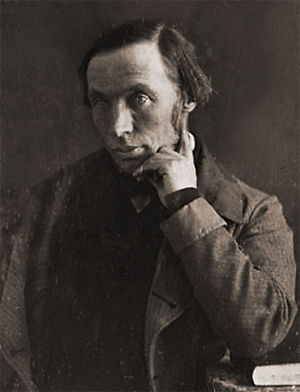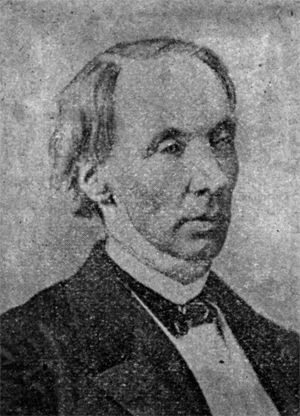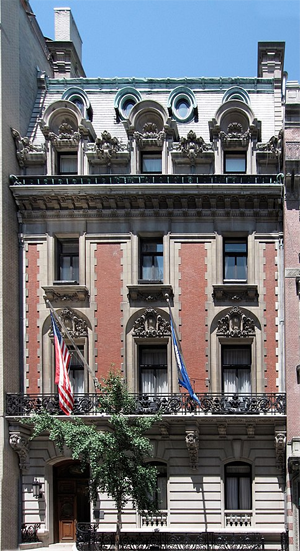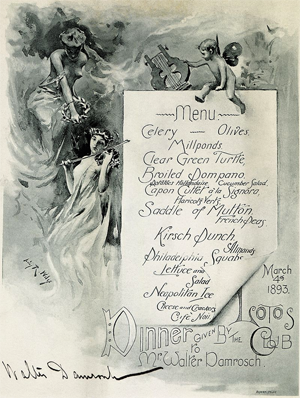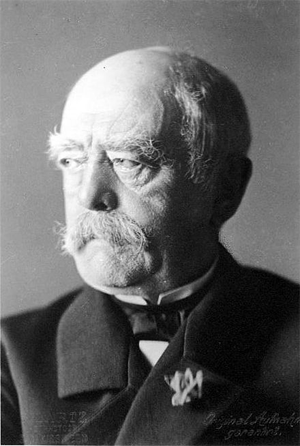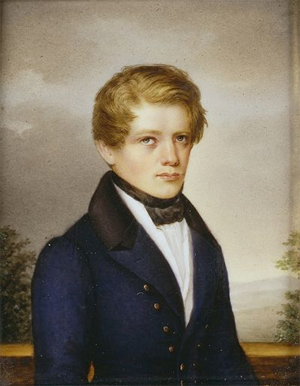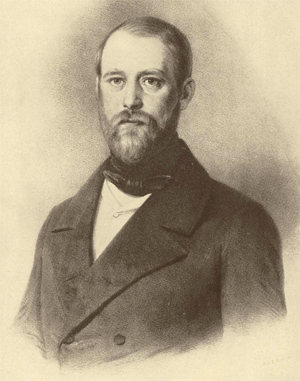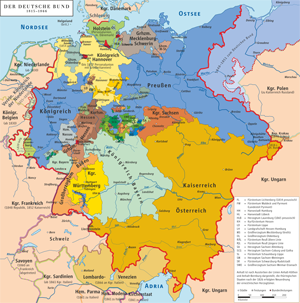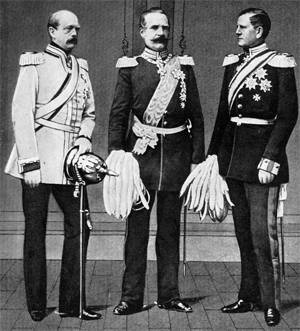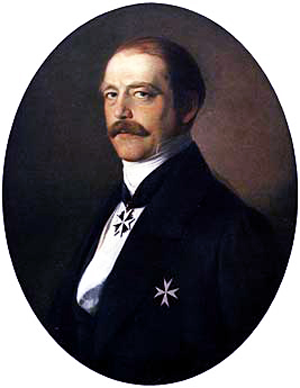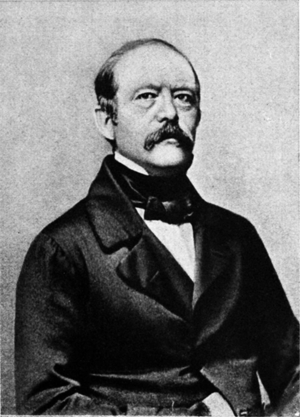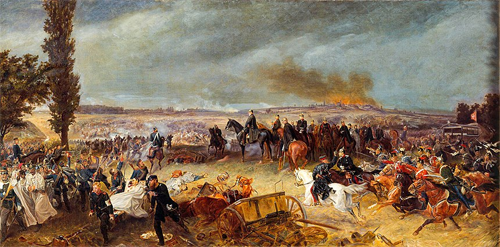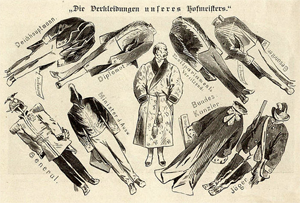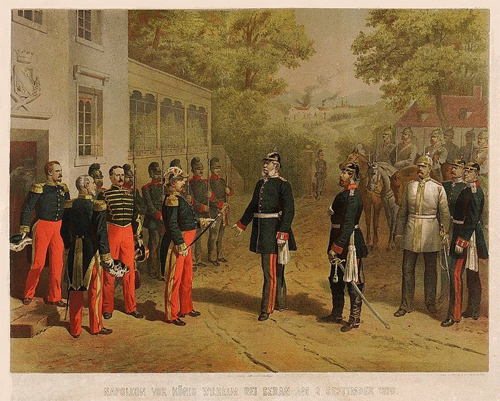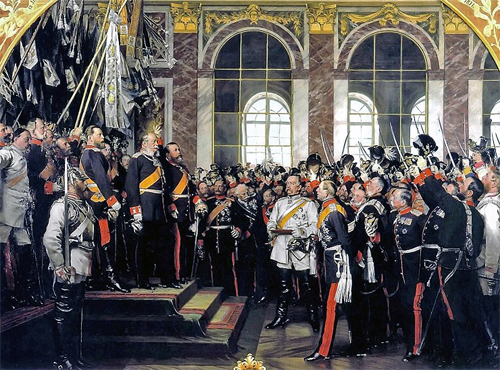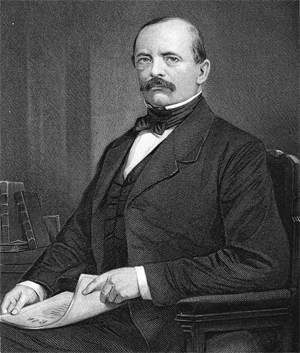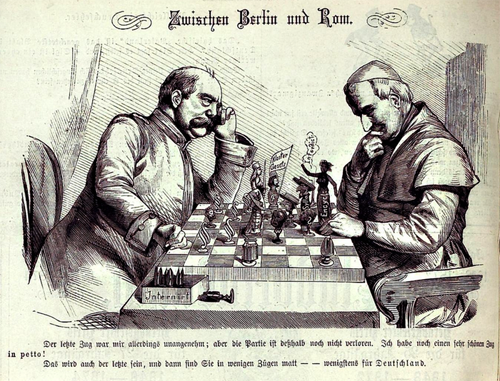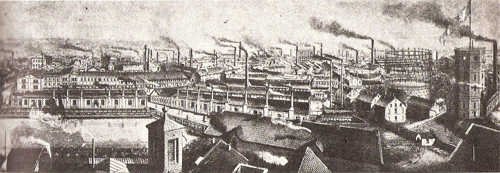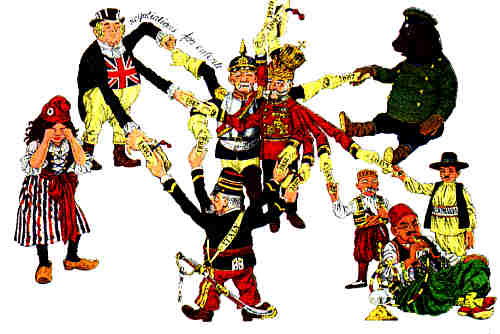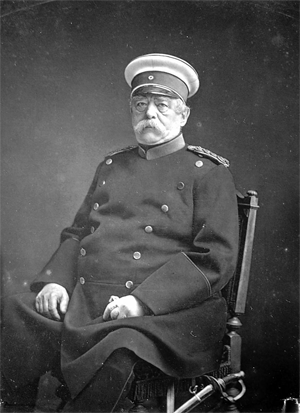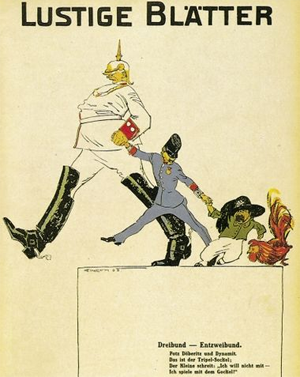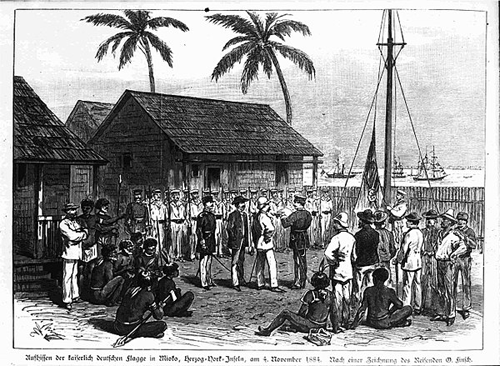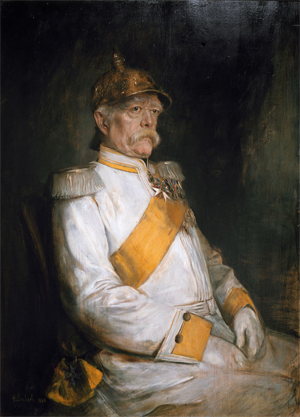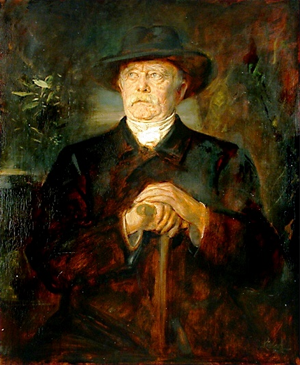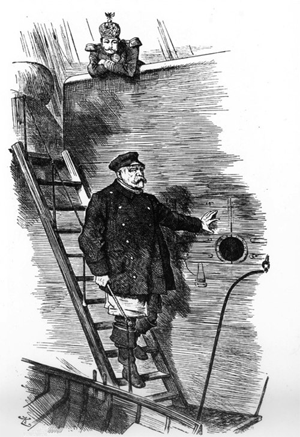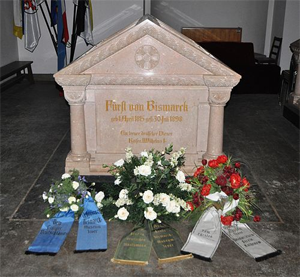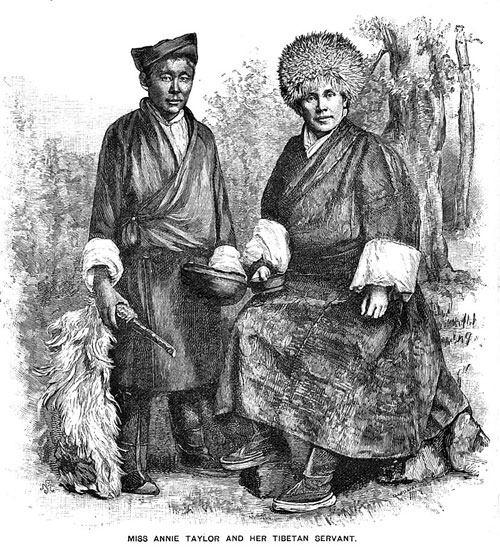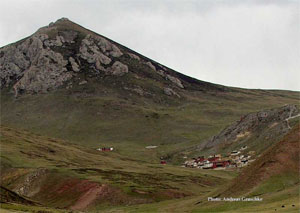Part 3 of 3
Legacy and memory
ReputationHistorians have reached a broad consensus on the content, function and importance of the image of Bismarck within Germany's political culture over the past 125 years.[126][127] According to Steinberg, his achievements in 1862–71 were "the greatest diplomatic and political achievement by any leader in the last two centuries."[128]
Bismarck's most important legacy is the unification of Germany. Germany had existed as a collection of hundreds of separate principalities and Free Cities since the formation of the Holy Roman Empire. Over the centuries various rulers had tried to unify the German states without success until Bismarck. Largely as a result of Bismarck's efforts, the various German kingdoms were united into a single country.
Following unification, Germany became one of the most powerful nations in Europe. Bismarck's astute, cautious, and pragmatic foreign policies allowed Germany to peacefully retain the powerful position into which he had brought it, while maintaining amiable diplomacy with almost all European nations. France was the main exception because of the Franco–Prussian War and Bismarck's harsh subsequent policies; France became one of Germany's most bitter enemies in Europe. Austria, too, was weakened by the creation of a German Empire, though to a much lesser extent than France. Bismarck believed that as long as Britain, Russia and Italy were assured of the peaceful nature of the German Empire, French belligerency could be contained;[citation needed] his diplomatic feats were undone, however, by Kaiser Wilhelm II, whose policies unified other European powers against Germany in time for World War I.
Historians stress that Bismarck's peace-oriented, "saturated continental diplomacy" was increasingly unpopular, because it consciously reined in any expansionist drives.[citation needed] In dramatic contrast stands the ambition of Wilhelm II's Weltpolitik to secure the Reich's future through expansion, leading to World War I. Likewise Bismarck's policy to deny the military a dominant voice in foreign political decision making was overturned by 1914 as Germany became an armed state.
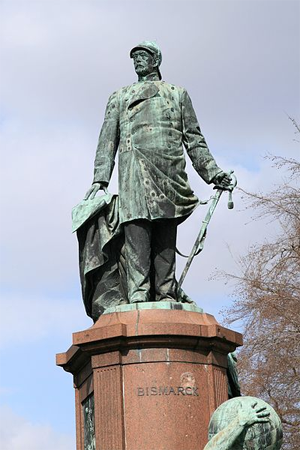 A statue of Bismarck in Berlin
A statue of Bismarck in Berlin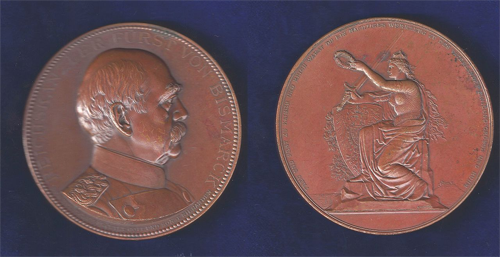 German medal by Schwenzer 1898 (ND) commemorating Bismarck's death
German medal by Schwenzer 1898 (ND) commemorating Bismarck's deathBismarck's psychology and personal traits have not been so favourably received by scholars. The historian Jonathan Steinberg portrays a demonic genius who was deeply vengeful, even toward his closest friends and family members:
[Bismarck's friend, German diplomat Kurd von Schlözer] began to see Bismarck as a kind of malign genius who, behind the various postures, concealed an ice-cold contempt for his fellow human beings and a methodical determination to control and ruin them. His easy chat combined blunt truths, partial revelations, and outright deceptions. His extraordinary double ability to see how groups would react and the willingness to use violence to make them obey, the capacity to read group behavior and the force to make them move to his will, gave him the chance to exercise what [Steinberg has] called his "sovereign self"[129]
Evans says he was "intimidating and unscrupulous, playing to others' frailties, not their strengths."[130] British historians, including Steinberg, Evans, Taylor, Palmer and Crankshaw, see Bismarck as an ambivalent figure, undoubtedly a man of great skill but who left no lasting system in place to guide successors less skilled than himself. Being a committed monarchist himself, Bismarck allowed no effective constitutional check on the power of the Emperor, thus placing a time bomb in the foundation of the Germany that he created.
Observers at the time and since have commented on Bismarck's skill as a writer. As Henry Kissinger has noted, "The man of 'blood and iron' wrote prose of extraordinary directness and lucidity, comparable in distinctiveness to Churchill's use of the English language."[131]
A 2011 biographer of Bismarck wrote that he was:
a political genius of a very unusual kind [whose success] rested on several sets of conflicting characteristics among which brutal, disarming honesty mingled with the wiles and deceits of a confidence man. He played his parts with perfect self-confidence, yet mixed them with rage, anxiety, illness, hypochrondria, and irrationality. ... He used democracy when it suited him, negotiated with revolutionaries and the dangerous Ferdinand Lassalle, the socialist who might have contested his authority. He utterly dominated his cabinet ministers with a sovereign contempt and blackened their reputations as soon as he no longer needed them. He outwitted the parliamentary parties, even the strongest of them, and betrayed all those ... who had put him into power. By 1870 even his closest friends ... realized that they had helped put a demonic figure into power.[132]
During most of his nearly thirty-year-long tenure, Bismarck held undisputed control over the government's policies. He was well supported by his friend Albrecht von Roon, the war minister, as well as the leader of the Prussian army Helmuth von Moltke. Bismarck's diplomatic moves relied on a victorious Prussian military, and these two men gave Bismarck the victories he needed to convince the smaller German states to join Prussia.[citation needed]
Bismarck took steps to silence or restrain political opposition, as evidenced by laws restricting the freedom of the press, and the anti-socialist laws. He waged a culture war (Kulturkampf) against the Catholic Church until he realized the conservatism of the Catholics made them natural allies against the Socialists. His king Wilhelm I rarely challenged the Chancellor's decisions; on several occasions, Bismarck obtained his monarch's approval by threatening to resign. However, Wilhelm II intended to govern the country himself, making the ousting of Bismarck one of his first tasks as Kaiser. Bismarck's successors as Chancellor were much less influential, as power was concentrated in the Emperor's hands.
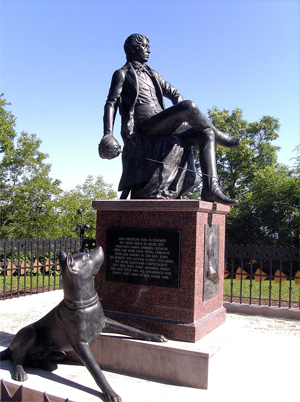 Memorial to the young Bismarck at the Rudelsburg in Saxony-Anhalt
Memorial to the young Bismarck at the Rudelsburg in Saxony-Anhalt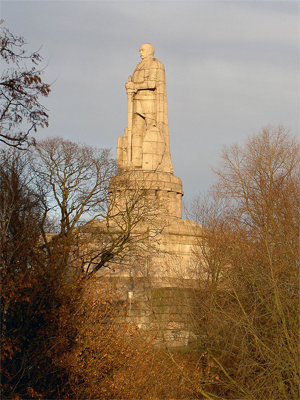 The Bismarck Monument, HamburgMemorials
The Bismarck Monument, HamburgMemorialsImmediately after he left office, citizens started to praise him and established funds to build monuments like the Bismarck Memorial or towers dedicated to him. Throughout Germany, the accolades were unending, several buildings were named in his honour, portraits of him were commissioned from artists such as Franz von Lenbach and C.W. Allers and books about him became best-sellers.[citation needed] The first monument built in his honour was the one at Bad Kissingen erected in 1877.
Numerous statues and memorials dot the cities, towns, and countryside of Germany, including the famous Bismarck Memorial in Berlin and numerous Bismarck towers on four continents. The only memorial depicting him as a student at Göttingen University (together with a dog, possibly his Reichshund Tyras) and as a member of his Corps Hannovera was re-erected in 2006 at the Rudelsburg.[citation needed] The gleaming white 1906 Bismarck Monument in the city of Hamburg, stands in the centre of the St. Pauli district, and is the largest, and probably best-known, memorial to Bismarck worldwide. The statues depicted him as massive, monolithic, rigid and unambiguous.[133] Two warships were named in his honour, the SMS Bismarck of the German Imperial Navy, and the Bismarck from the World War II–era.
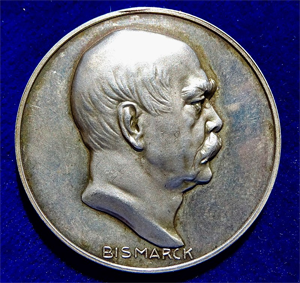 Obverse of a WWI Judaica Silver Medal by Hugo Grünthal and Paul Sturm for Bismarck's 100th Birthday, 1915
Obverse of a WWI Judaica Silver Medal by Hugo Grünthal and Paul Sturm for Bismarck's 100th Birthday, 1915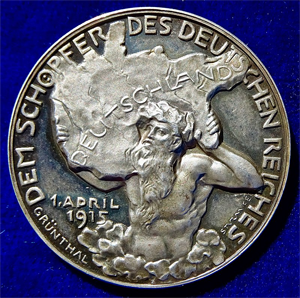 The reverse of this medal is symbolising the war efforts by a giant carrying Germany.Bismarck: memory and myth
The reverse of this medal is symbolising the war efforts by a giant carrying Germany.Bismarck: memory and mythBismarck was the most memorable figure in Germany down to the 1930s. The dominant memory was the great hero of the 1860s, who defeated all enemies, especially France, and unified Germany to become the most powerful military and diplomatic force in the world. Of course, there were no monuments celebrating Bismarck's devotion to the cause of European peace after 1871.[134] But there were other German memories. His fellow Junkers were disappointed, as Prussia after 1871 became swallowed up and dominated by the German Empire. Liberal intellectuals, few in number but dominant in the universities and business houses, celebrated his achievement of the national state, a constitutional monarchy, and the rule of law, and forestalling revolution and marginalizing radicalism.[135][136] Social Democrats and labor leaders had always been his target, and he remained their bête noire.[137] Catholics could not forget the Kulturkampf and remained distrustful. Especially negative were the Poles who hated his Germanization programs.[138]
Robert Gerwarth shows that the Bismarck myth, built up predominantly during his years of retirement and even more stridently after his death, proved a powerful rhetorical and ideological tool.[139] The myth made him out to be a dogmatic ideologue and ardent nationalist when, in fact, he was ideologically flexible. Gerwarth argues that the constructed memory of Bismarck played a central role as an antidemocratic myth in the highly ideological battle over the past, which raged between 1918 and 1933. This myth proved to be a weapon against the Weimar Republic and exercised a destructive influence on the political culture of the first German democracy. Frankel in Bismarck's Shadow (2005) shows the Bismarck cult fostered and legitimized a new style of right-wing politics. It made possible the post-Bismarckian crisis of leadership, both real and perceived, that had Germans seeking the strongest possible leader and asking, "What Would Bismarck Do?" For example, Hamburg's memorial, unveiled in 1906, is considered one of the greatest expressions of Imperial Germany's Bismarck cult and an important development in the history of German memorial art. It was a product of the desire of Hamburg's patrician classes to defend their political privileges in the face of dramatic social change and attendant demands for political reform. To those who presided over its construction, the monument was also a means of asserting Hamburg's cultural aspirations and of shrugging off a reputation as a city hostile to the arts. The memorial was greeted with widespread disapproval among the working classes and did not prevent their increasing support for the Social Democrats.[140]
Place namesA number of localities around the world have been named in Bismarck's honour. They include:
• Bismarck Archipelago, near the former German colony of New Guinea.[141]
• Bismarck, Illinois[142]
• Bismarck, North Dakota, the only U.S. state capital named for a foreign statesman.[143]
• Bismarck, Missouri, a city in Missouri.[144]
• Bismarck Sea[145]
• Bismarck Strait, a channel in Antarctica.[146]
• Cape Bismarck, NE Greenland.[147]
Titles, styles, honours and armsStyles of The Prince of Bismarck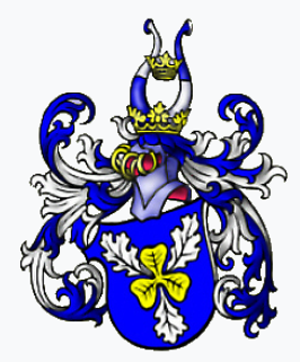
Reference style His Serene Highness
Spoken style Your Serene Highness
Alternative style Sir
Titles and styles• 1 April 1815 – 1865: Junker Otto von Bismarck
• 1865–1871: His High-born The Count of Bismarck-Schönhausen
• 1871–1890: His Serene Highness The Prince of Bismarck, Count of Bismarck-Schönhausen
• 1890 – 30 July 1898: His Serene Highness The Prince of Bismarck, Count of Bismarck-Schönhausen, Duke of Lauenburg
Bismarck was created Graf von Bismarck-Schönhausen ("Count of Bismarck-Schönhausen") in 1865; this comital title is borne by all his descendants in the male line. In 1871, he was further created Fürst von Bismarck ("Prince of Bismarck") and accorded the style of Durchlaucht ("Serene Highness"); this princely title descended only to his eldest male heirs.
Duke of Lauenburg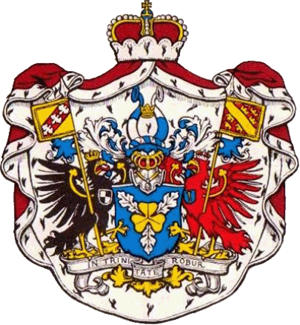 Arms of Otto, Prince Bismarck
Arms of Otto, Prince BismarckIn 1890, Bismarck was granted the title of Herzog von Lauenburg ("Duke of Lauenburg"); the duchy was one of the territories that Prussia seized from the king of Denmark in 1864.
It was Bismarck's ambition to be assimilated into the mediatized houses of Germany. He attempted to persuade Kaiser Wilhelm I that he should be endowed with the sovereign duchy of Lauenburg, in reward for his services to the imperial family and the German empire. This was on the understanding that Bismarck would immediately restore the duchy to Prussia; all he wanted was the status and privileges of a mediatized family for himself and his descendants. This novel idea was rejected by the conservative emperor, who thought that he had already given the chancellor enough rewards. There is reason to believe that he informed Wilhelm II of his wishes. After being forced by the sovereign to resign, he received the purely honorific title of "Duke of Lauenburg", without the duchy itself and the sovereignty that would have transformed his family into a mediatized house. Bismarck regarded it as a mockery of his ambition, and he considered nothing more cruel than this action of the emperor.[148]
Upon Bismarck's death in 1898 his dukedom, held only for his own lifetime, became extinct.
Honours
Domestic[149][150]
• Kingdom of Prussia:
o Order of the Black Eagle, Knight with Collar and Diamonds
o Order of the Red Eagle, Grand Cross with Oak Leaves, Crown, Scepter and Swords
o Order of the Prussian Crown, Knight 1st Class with Diamonds
o Royal House Order of Hohenzollern, Grand Commander with Diamonds
o Pour le Mérite with Oak Leaves, 1884 (military);[151] 1896 (civil)[152]
o Iron Cross, 2nd and 1st Class, 1870; with Oak Leaves and Jubilee Clip, 1895
o Wilhelm-Orden, Knight with Collar, 1896
o Johanniter Order, Commander of Honour
o Lifesaving Medal
o Landwehr Service Medal, 1st Class
• Anhalt: Order of Albert the Bear, Grand Cross, 1862[153]
• Baden: House Order of Fidelity, Knight, 1869; with Golden Collar in Diamonds, 1871[154]
• Bavaria: Order of St. Hubert, Knight with Star in Diamonds, 1866[155]
• Brunswick: Order of Henry the Lion, Grand Cross, 1867[156]
• Ernestine duchies: Saxe-Ernestine House Order, Grand Cross, 1866[157]
• Hanover: Royal Guelphic Order, Grand Cross
• Hesse-Kassel: Order of the Golden Lion, Knight, 1 July 1865[158]
• Hesse and by Rhine:[159]
o Order of Philip the Magnanimous, Grand Cross, 7 January 1855
o Ludwig Order, Grand Cross, 9 March 1871
• Mecklenburg: House Order of the Wendish Crown, Grand Cross with Golden Crown
• Oldenburg: House and Merit Order of Duke Peter Frederick Louis, Grand Cross with Golden Crown, 24 October 1866; with Swords, 31 December 1870[160]
• Saxe-Weimar-Eisenach: Order of the White Falcon, Grand Cross with Diamonds, 3 September 1866[161]
• Saxony: Order of the Rue Crown, Knight with Diamonds, 1868[162]
• Württemberg: Order of the Württemberg Crown, Grand Cross with Diamonds, 1871[163]
Foreign[149]
• Austrian Empire:[164]
o Imperial Order of the Iron Crown, Knight 1st Class, 1853
o Royal Hungarian Order of St. Stephen, Grand Cross with Diamonds, 1864
• Belgium: Royal Order of Leopold, Grand Cordon
• Denmark: Order of the Dannebrog, Grand Cross, 11 June 1852[165]
• French Empire: Legion of Honour, Grand Cross, May 1865[166]
• Kingdom of Greece: Order of the Redeemer, Grand Cross
• Kingdom of Italy: Order of the Annunciation, Knight, 13 January 1867[167]
• Holy See: Supreme Order of Christ, Knight with Diamonds
• Empire of Japan: Order of the Chrysanthemum, Grand Cordon
• Netherlands: Order of the Netherlands Lion, Grand Cross
• Luxembourg: Order of the Oak Crown, Grand Cross
• Ottoman Empire:
o Order of Osmanieh, 1st Class with Diamonds
o Gold Imtiyaz Medal with Diamonds
• Beylik of Tunis: Husainid House Order
• Persian Empire:
o Order of the Lion and the Sun, 1st Class
o Order of the August Portrait in Diamonds
• Kingdom of Portugal: Order of the Tower and Sword, Grand Cross
• Kingdom of Romania: Order of the Star of Romania, Grand Cross
• Russian Empire:
o Order of St. Andrew, Knight in Diamonds
o Order of St. Alexander Nevsky, Knight
o Order of St. Anna, Knight 1st Class
o Order of St. Stanislaus, Knight 1st Class
o Imperial Order of the White Eagle, Knight
• San Marino: Order of San Marino, Grand Cross
• Kingdom of Serbia: Royal Order of the White Eagle, Grand Cross
• Siam: Order of the White Elephant, Grand Cross
• Spain: Order of the Golden Fleece, Knight, 6 March 1875[168]
• Sweden-Norway: Royal Order of the Seraphim, Knight, 31 May 1875[169]
• Zanzibar: Order of the Brilliant Star of Zanzibar, Knight 1st Class (Princely Class)
In popular culture
Literature• Historian Robert K. Massie has noted Bismarck's popular image was as "gruff" and "militaristic", while in reality "Bismarck's tool was aggressive, ruthless diplomacy."[170]
• Bismarck is one of the principal characters in Royal Flash, the second novel in the Flashman series written by George MacDonald Fraser.[171]
Film• Bismarck, portrayed by Curd Jürgens, appears as a major character in the 1974 British television series Fall of Eagles.[172]
• In the 2014 Danish series 1864, Bismarck is portrayed by Rainer Bock.[173]
Games
• Bismarck appears as the leader of the German civilization in the computer strategy games, Civilization III, Civilization IV and Civilization V.[174]
See also• Germany portal
• Politics portal
• Conservatism portal
• Conservatism in Germany
• Gerson von Bleichröder, Bismarck's banker and economics advisor
• House of Bismarck
• Landtag of Prussia
• Bismarck towers
References
Notes1. Steinberg, Jonathan (2011). Bismarck: A Life. p. 51. ISBN 978-0199782529.
2. Pflanze 1990, p. 68.
3. Regarding personal names: Fürst is a title, translated as Prince, not a first or middle name. The feminine form is Fürstin.
4. Eric Hobsbawm, The Age of Empire: 1875–1914 (1987), p. 312.
5. Hopel, Thomas (23 August 2012) "The French-German Borderlands: Borderlands and Nation-Building in the 19th and 20th Centuries"
6. Steinberg, 2011, pp. 8, 424, 444; Bismarck specifically referred to Socialists, among others, as "Enemies of the Reich".
7. Hull, Isabel V. (2004). The Entourage of Kaiser Wilhelm II, 1888–1918. p. 85. ISBN 978-0521533218.
8. George Hesekiel: Das Buch vom Fürsten Bismarck. Bielefeld und Leipzig 1873, p. 55.
9. Lowe, Charles (2005). Prince Bismarck: An Historical Biography With Two Portraits. Kessinger Publishing. pp. 538–40. ISBN 978-1419180033. French he speaks with the purity and fluency almost of a native, and the same may be said of his English. [...] Not so fluent is the Chancellor's Italian as his French, but yet he can read the journals of Rome. [...] Once, too, he boasted that he was 'about the only man in the Foreign Office who understands Russian'—a language which he [...] acquired during his residence at St. Petersburg. [...] And not only did he master Russian, but he also learned Polish to a degree enabling him to make himself understood.
10. Field 1898, pp. 603–04.
11. Steinberg, 2011, pp. 39–41.
12. Steinberg, 2011, p. 93.
13. Pflanze 1971, p. 56.
14. Steinberg, 2011, p. 89.
15. Steinberg, 2011, p. 86.
16. Steinberg, 2011, pp. 87–88.
17. Pflanze 1971, p. 64.
18. Alan Palmer, Bismarck [Charles Scribner Publishers: New York, 1976] p. 41.
19. Alan Palmer, Bismarck, p. 42.
20. Steinberg, 2011, p. 117.
21. Steinberg, 2011, pp. 142–43.
22. Quotations from letters between Leopold von Gerlach and Bismarck debating the topic of Napoleon III are in Steinberg, 2011, pp. 131–33.
23. Steinberg, 2011, ch. 5.
24. Steinberg, 2011, p. 147
25. Steinberg, 2011, ch. 6.
26. Eyck 1964, pp. 58–68.
27. Taylor 1969, pp. 48–51.
28. Eyck 1964, pp. 69–70.
29. Hollyday 1970, pp. 16–18.
30. Gordon A. Craig, Germany, 1866–1945 (1978), pp. 1–21.
31. Eyck 1964, pp. 58–106.
32. Eyck 1964, pp. 107–38.
33. Pearce 2010.
34. Staff (May 10, 1866) "Ueber das Attentat auf den Grafen Bismarck" Wiener Morgen-Post (Vienna) p. 1
35. Darmstaedter, Friedrich (2008). Bismarck and the Creation of the Second Reich. Transaction Publishers. p. 289. ISBN 978-1412807838.
36. Steinberg, 2011, p. 253.
37. Steinberg, 2011, p. 257.
38. Howard 1991, p. 40.
39. Bismarck, Otto von (1966). The Memoirs vol. II. New York: Howard Fertig. pp. 58–60.
40. Eyck 1964, pp. 139–86.
41. William Langer, "Bismarck as Dramatist," in Studies in Diplomatic History & Historiography in Honour of G.P. Gooch (1962) pp. 199–216.
42. Bismarck, Otto, The Man & the Statesman, Vol. 2, Cosimo Classics, 2013, 384 p. ISBN 978-1596051850, p. 58.
43. Poschinger, Heinrich, Conversations with Prince Bismarck, Kessinger Publishing, 2007, 304 p. ISBN 0548341362, p. 87.
44. Taylor 1969, p. 126.
45. Cowen, Rob (31 January 2012). "Restored Edison Records Revive Giants of 19th-Century Germany". The New York Times. p. D3.
46. Crankshaw 1981, pp. 294–96.
47. Stern, Fritz (2013). Gold and Iron. p. 139. ISBN 978-0307829863.
48. Taylor 1969, p. 133.
49. Steinberg, 2011, pp. 311–12.
50. Hollyday 1970, p. 6.
51. Blackbourn 1998, pp. 261–63.
52. Ross 2000.
53. Gross 2005.
54. Stone, James (1994). "Bismarck and the Containment of France, 1873–1877". Canadian Journal of History. 29 (2): 281–304. doi:10.3138/cjh.29.2.281. Archived from the original on 14 December 2014.
55. Quoted in Crankshaw 1981, pp. 308–09
56. Rebecca Ayako Bennette, Fighting for the Soul of Germany: The Catholic Struggle for Inclusion after Unification (Harvard U.P. 2012)
57. Steinberg, 2011, pp. 335–36.
58. E. J. Feuchtwanger, Bismarck (2002) p. 208.
59. Taylor 1969, p. 124.
60. Taylor 1969, p. 10.
61. Crankshaw 1981, p. 149.
62. Cited from Bismarck: Die gesammelten Werke, edited by H. von Petersdorff, et al. (Berlin, 1923), Volume XIV, p. 568. Letter to Malwine von Arnim, 14 March 1861
63. Norman Davies, God's Playground, a History of Poland: 1795 to the present (1982) p. 124 online
64. Cited from Bismarck: Die gesammelten Werke, edited by H. von Petersdorff, et al. (Berlin, 1923), Volume III, pp. 289–90. Letter to Albrecht von Bernstorff, 13 November 1861
65. Crankshaw 1981, p. 404.
66. Friedrich Darmstaedter, Bismarck and the creation of the Second Reich (2008) pp. xiv, xvii
67. Shirley, Michael H.; Larson, Todd E. A., eds. (2016). Splendidly Victorian: Essays in Nineteenth- and Twentieth-Century British History in Honour of Walter L. Arnstein. Routledge. pp. 146ff. ISBN 978-1317243274.
68. A.J.P. Taylor, Europe: Grandeur and Decline (1967) p. 89.
69. Raymond James Sontag, European Diplomatic History: 1871–1932 (1933) pp. 3–58.
70. W. N. Medlicott, "Bismarck and the Three Emperors' Alliance, 1881-87," Transactions of the Royal Historical Society Vol. 27 (1945), pp. 61–83 online.
71. Crankshaw 1981, p. 322.
72. Mitchell, Allan (2018). The German Influence in France after 1870: The Formation of the French Republic. p. 190. ISBN 978-1469622927.
73. Kent, George O. (1978). Bismarck and His Times. Southern Illinois UP. p. 79. ISBN 978-0809308590.
74. See also Ullrich, Volker (2015). Bismarck. p. 57. ISBN 978-1910376249. and Clark, Christopher M. (2006). Iron Kingdom: The Rise and Downfall of Prussia, 1600–1947. Harvard University Press. p. 553. ISBN 978-0674023857.
75. John Keiger, France and the World since 1870 (2001) pp 111–17.
76. Stone, James (1994). "Bismarck and the Containment of France, 1873–1877". Canadian Journal of History. 29 (2): 281–304. doi:10.3138/cjh.29.2.281. Archived from the original on 14 December 2014.
77. Lothar Gall, Bismarck: The White Revolutionary, Volume 2: 1871–1898 (1986) pp. 46–48.
78. William L. Langer, European Alliances and Alignments, 1871–1890 (2nd ed. 1950) pp. 44–55.
79. Taylor 1969, p. 212.
80. Retallack 2008, p. 29.
81. James Stone, "Bismarck and the Great Game: Germany and Anglo-Russian Rivalry in Central Asia, 1871–1890." Central European History 48.2 (2015): 151–75.
82. von Strandmann, Hartmut Pogge (1969). "Domestic Origins of Germany's Colonial Expansion under Bismarck". Past & Present (42): 140–159. JSTOR 650184.
83. Chlodwig of Hohenlohe-Schillingsfuerst, Memoirs, W. Heinemann, 1906, p. 259.
84. Kennedy 1988, ch 10.
85. Eyck 1964, pp. 273–76.
86. Wehler 1970, pp. 119–55.
87. Crankshaw 1981, pp. 395–97.
88. Firth, S. G. (1972). "The New Guinea Company, 1885–1899: A case of unprofitable imperialism". Historical Studies. 15 (59): 361–77. doi:10.1080/10314617208595478.
89. Hans-Ulrich Wehler, "Bismarck's Imperialism 1862–1890" Past and Present (1970) 48: 119–55.
90. Ludwig 1927a, p. 73.
91. Ludwig 1927b, p. 511.
92. William L. Langer, European Alliances and Alignments: 1871–1890 (2nd ed.) 1950 p. 459.
93. Langer, European Alliances and Alignments: 1871–1890 pp. 503–04.
94. Steinberg, 2011, pp. 416–17.
95. Kersbergen, Kees van; Vis, Barbara (2013). Comparative Welfare State Politics: Development, Opportunities, and Reform. Cambridge UP. p. 38. ISBN 978-1107652477.
96. E. P. Hennock, The Origin of the Welfare State in England and Germany, 1850–1914: Social Policies Compared (Cambridge University Press, 2007)
97. E. P. Hennock. "Social Policy under the Empire: Myths and Evidence" German History 1998 16(1): 58–74; Herman Beck, The Origins of the Authoritarian Welfare State in Prussia. Conservatives, Bureaucracy, and the Social Question, 1815–70. 1995.
98. Frederic B. M. Hollyday, Bismarck (1970) p. 65.
99. Moritz Busch. Bismarck: Some secret pages from his history. New York: Macmillan, 1898. Vol. II, p. 282.
100. Holborn, Hajo. A History of Modern Germany – 1840–1945. Princeton UP, 1969. pp. 291–93.
101. Khoudour-Castéras, David (2008). "Welfare State and Labor Mobility: The Impact of Bismarck's Social Legislation on German Emigration Before World War I". Journal of Economic History. 68 (1): 211–43. doi:10.1017/s0022050708000077.
102. Leichter, Howard M. (1979). A comparative approach to policy analysis: health care policy in four nations. Cambridge: Cambridge University Press. p. 121. ISBN 978-0-521-22648-6. The Sickness Insurance Law (1883). Eligibility. The Sickness Insurance Law came into effect in December 1884. It provided for compulsory participation by all industrial wage earners (i.e., manual laborers) in factories, ironworks, mines, shipbuilding yards, and similar workplaces.
103. Hennock, Ernest Peter (2007). The origin of the welfare state in England and Germany, 1850–1914: social policies compared. Cambridge: Cambridge University Press. p. 157. ISBN 978-0-521-59212-3.
104. Bauernschuster, Stefan; Driva, Anastasia; Hornung, Erik (2019). "Bismarck's Health Insurance and the Mortality Decline" (PDF). Journal of the European Economic Association. doi:10.1093/jeea/jvz052.
105. E. P. Hennock, "Social Policy in the Bismarck Era: A Progress Report," German History, (June 2003) 21#2 pp. 229–38 online.
106. Cowen 2012.
107. Craig, (1978) pp. 225–29.
108. Steinberg, 2011, pp. 429–64.
109. Steinberg, pp. 440–43
110. Craig, (1978) pp. 171–79.
111. Steinberg, pp. 445–47.
112. Steinberg, 447–50.
113. Eyck (1958), p. 321.
114. Steinberg, 2011, p. 449.
115. Rich, Norman (1965). Friedrich von Holstein: politics and diplomacy in the era of Bismarck and Wilhelm II. 1. London: Cambridge University Press. pp. 279–83. shows that Friedrich von Holstein was a key player
116. Steinberg, pp. 446, 459, 463.
117. Bismarck, Otto von (1921) "The Kaiser Vs. Bismarck: Suppressed Letters by the Kaiser and New Chapters from the Autobiography of the Iron Chancellor" Harper. p. 122
118. Mqarcus, Benjamin et al. (eds.) (1910) "Bismarck=Schǎusen, Otto Eduard Leopold" Appleton's new practical cyclopedia p. 281
119. Lerman, Katharine (2014). Bismarck. Routledge. p. 257. ISBN 978-1317900627.
120. Palmer, Alan (1976). Bismarck. New York City: Charles Scribner's Sons. p. 267. ISBN 978-0684146836.
121. Taylor 1969, p. 264.
122. Bingham, Colin (1982). Wit and Wisdom: A Public Affairs Miscellany. p. 118. ISBN 978-0522842418.
123. Egerton, George W. (1994). Political Memoir: Essays on the Politics of Memory. Psychology Press. p. 14. ISBN 978-0714634715.
124. Steinberg, pp. 462–63.
125. Steinberg, pp. 463–64.
126. Müller (2008)
127. Urbach (1998)
128. Steinberg, 2011, p. 184.
129. Steinberg, 2011, p. 466.
130. Evans, Richard J. (23 February 2012) "The Gambler in Blood and Iron," New York Review of Books p. 39.
131. Kissinger 2011.
132. Steinberg, 2011, pp. 184–85 online
133. Sieglinde Seele, Lexikon der Bismarck-Denkmäler. Türme, Standbilder, Büsten, Gedenksteine und andere Ehrungen, Michael Imhof Verlag: Petersberg, 2005; 480 pp.
134. Frankel, Richard E. (2005) Bismarck's Shadow: The Cult of Leadership and the Transformation of the German Right, 1898–1945 Bloomsbury Academic. pp. 184–96. ISBN 1845200349
135. Taylor, A. J. P. (1955) Bismarck, the Man and the Statesman New York: Knopf. pp. 241–44, 267–69.
136. Feuchtwanger, Edgar (2002) Bismarck Routledge. pp. 253–63. ISBN 0415216141
137. Steenson, Gary P. (1981) 'Not One Man, Not One Penny': German Social Democracy, 1863–1914Pittsburgh: University of Pittsburgh Press. pp. 228–29. ISBN 0822953293
138. Ku, Yangmo (2010) "The Politics of Historical Memory in Germany: Brandt's Ostpolitik, the German-Polish History Textbook Commission, and Conservative Reaction" Journal of Educational Media, Memory, and Society 2.2 (2010): 75–92
139. Gerwarth, Robert (2007) The Bismarck Myth: Weimar Germany and the Legacy of the Iron Chancellor. Oxford University Press. ISBN 978-0199236893
140. Russell, Mark A. Russell (2000) "The Building of Hamburg's Bismarck Memorial, 1898–1906." Historical Journal 43#1 (2000): 133–56.
141. Chisholm, Hugh, ed. (1911). "Bismarck Archipelago" . Encyclopædia Britannica. 4 (11th ed.). Cambridge University Press.
142. Stapp, Katherine; W. I. Bowman (1968). History Under Our Feet: The Story of Vermilion County, Illinois. Danville, Illinois: Interstate Printers and Publishers, Inc. pp. 50–51.
143. "Bismarck City Portrait". City of Bismarck. Archived from the original on 20 November 2010. Retrieved 19 September 2010.
144. Forsythe, Roger (29 June 1993). "First Came the Trains (A History of Bismarck)". Daily Journal. Retrieved 11 March 2019.
145. Bismarck Sea at the Encyclopædia Britannica
146. "Bismarck Strait, Antarctica". geographic.org. Retrieved 11 March 2019.
147. "Catalogue of place names in northern East Greenland". Geological Survey of Denmark. Retrieved 7 October 2019.
148. A Veteran Diplomat (27 September 1908). "The "Mediatized" – or the "High Nobility" of Europe; Consisting of Something Like Fifty families Which Enjoyed Petty Sovereignty Before the Holy Roman Empire's Overthrow, They Still Exercise Certain Special Privileges Mixed with Unusual Restrictions". The New York Times.
149. Handbuch über den Königlich Preußischen Hof und Staat fur das jahr 1890, p. 63
150. von Arndt, Ludwig; Müller-Wusterwitz, Nikolaj; von Bismarck, Ferdinand (15 May 2008). Die Orden und Ehrenzeichen des Reichskanzlers Fürst Otto von Bismarck (in German). Phaleristischer Verlag.
151. Müller, Wilhelm (2013). Politische Geschichte der Gegenwart: 18. Das Jahr 1884. Heidelberg: Springer Verlag. p. 93. ISBN 978-3642991806.
152. Orden Pour le Mérite für Wissenschaften und Künste (1978). Die Mitglieder des Ordens. 2 1882–1952(PDF). Berlin: Gebr. Mann Verlag. p. 116. ISBN 978-3-7861-1125-2.
153. Hof- und Staats-Handbuch für des Herzogtum Anhalt (1883), "Herzoglicher Haus-Orden Albrecht des Bären" p. 17
154. Hof- und Staats-Handbuch des Großherzogtum Baden (1873), "Großherzogliche Orden" p. 61
155. Hof- und Staats-Handbuch des Königreichs Bayern (in German). Königl. Oberpostamt. 1867. p. 11. Retrieved 15 July 2019.
156. Hof- und Staatshandbuch des Herzogtums Braunschweig für das Jahr 1897. Braunschweig 1897. Meyer. p. 10
157. Staatshandbücher für das Herzogtum Sachsen-Coburg und Gotha (1884), "Herzogliche Sachsen-Ernestinischer Hausorden" p. 35
158. Kurfürstlich Hessisches Hof- und Staatshandbuch: 1866. Waisenhaus. 1866. p. 18.
159. Hof- und Staats-Handbuch ... Hessen (1879), "Großherzogliche Orden und Ehrenzeichen" pp. 23, 75
160. Hof- und Staatshandbuch des Großherzogtums Oldenburg: für das Jahr 1872/73, "Der Großherzogliche Haus-und Verdienst Orden" p. 33
161. Staatshandbuch für das Großherzogtum Sachsen / Sachsen-Weimar-Eisenach (1869), "Großherzogliche Hausorden" p. 15
162. Staatshandbuch für den Freistaat Sachsen: 1870. Heinrich. 1870. p. 5.
163. Hof- und Staats-Handbuch des Königreichs Württemberg (1873), "Königliche Orden", p. 35
164. "Ritter-Orden", Hof- und Staatshandbuch der Österreichisch-Ungarischen Monarchie, 1897, pp. 64, 96, retrieved 6 November 2019
165. Bille-Hansen, A. C.; Holck, Harald, eds. (1880) [1st pub.:1801]. Statshaandbog for Kongeriget Danmark for Aaret 1880 [State Manual of the Kingdom of Denmark for the Year 1880] (PDF). Kongelig Dansk Hof- og Statskalender (in Danish). Copenhagen: J.H. Schultz A.-S. Universitetsbogtrykkeri. p. 7. Retrieved 16 September 2019 – via da:DIS Danmark.
166. M. & B. Wattel (2009). Les Grand'Croix de la Légion d'honneur de 1805 à nos jours. Titulaires français et étrangers. Paris: Archives & Culture. p. 510. ISBN 978-2-35077-135-9.
167. Cibrario, Luigi (1869). Notizia storica del nobilissimo ordine supremo della santissima Annunziata. Sunto degli statuti, catalogo dei cavalieri (in Italian). Eredi Botta. p. 121. Retrieved 4 March 2019.
168. "Caballeros de la insigne orden del toisón de oro". Guía Oficial de España (in Spanish). 1887. p. 146. Retrieved 21 March 2019.
169. Svensk Rikskalender (in Swedish), 1881, p. 378, archived from the original on 11 June 2011, retrieved 6 January 2018 – via runeberg.org
170. Massie, Robert K., Dreadnought: Britain, Germany, and the Coming of the Great War (1991) New York: Random House. p. 76. ISBN 0-394-52833-6
171. Burt, Daniel S. (2001). The Biography Book: A Reader's Guide to Nonfiction, Fictional, and Film Biographies of More Than 500 of the Most Fascinating Individuals of All Time. Greenwood. p. 33. ISBN 978-1573562560.
172. Giddings, Robert; Selby, K. (2001). The Classic Serial on Television and Radio. Palgrave Macmillan UK. pp. 213–. ISBN 978-0230596290.
173. "1864 (TV Mini-Series 2014)". IMDb. Retrieved 22 June 2018.
174. Dobrin, Sidney I. (2009). Ecosee: Image, Rhetoric, Nature. SUNY Press. p. 272. ISBN 978-1438425849.
Further reading
Biographies• Crankshaw, Edward (1981). Bismarck. The Viking Press. ISBN 978-0670169825.
o Rich, Norman (January 10, 1982) "Sinking the Bismarck Legend" (review) The Washington Post
• Darmstaedter, Friedrich (2008). Bismarck and the Creation of the Second Reich. Russel & Russel. ISBN 978-0846206248.
• Dawson, William Harbutt (1908). The Evolution of Modern Germany. CreateSpace Independent Publishing Platform. ISBN 978-1519547781.
• Engelberg, Ernst (1986–90). Bismarck (in German). 1–2. Fayard. ISBN 978-3827500243.
• Eyck, Erich (1964). Bismarck and the German Empire. W.W. Norton & Company; 1st edition. ISBN 978-0393002355.
• Feuchtwanger, Edgar (2002). Bismarck. Historical Biographies. Routledge. ISBN 978-0415216135.
• Gall, Lothar (1990). Bismarck: The White Revolutionary. 1. Unwin Hyman. ISBN 978-0044457787.
• Gall, Lothar (1990). Bismarck: The White Revolutionary. 2. Trans. J. A. Underwood. Unwin Hyman. ISBN 978-0044457794.
• Headlam, James Wycliffe (1899). Bismarck and the Foundation of the German Empire. IndyPublish. ISBN 978-1414232713.
• Heuston, Kimberley Burton (2010). Otto von Bismarck: Iron Chancellor of Germany. A Wicked History. Franklin Watts. ISBN 978-0531228241. for middle school students
• Hollyday, F. B. M. (1970). Bismarck. Great Lives Observed. Prentice-Hall. ISBN 978-0130773623.
• Kent, George O. (1978). Bismarck and His Times. Southern Illinois University Press. ISBN 978-0809308590.
• Lerman, Katharine Anne. (2004). Bismarck: Profiles in Power. Longman. ISBN 978-0-582-03740-3.
• Ludwig, Emil (1927). Wilhelm Hohenzollern: The last of the Kaisers. Trans. Ethel Colburn Mayne. New York: Kessinger Publishing, LLC. ISBN 978-0766143418.
• Ludwig, Emil (1927). Bismarck: The Story of a Fighter. Skyhorse Publishing. ISBN 978-1620871768.
• Pflanze, Otto (1971). Bismarck and the Development of Germany: The Period of Unification, 1815–1871. 1. Princeton University Press. ISBN 978-0691007656.
• Pflanze, Otto (1990) [1963]. Bismarck and the Development of Germany: The Period of Consolidation, 1871–1880. 2. Princeton University Press. ISBN 978-0-691-05588-6.
• Pflanze, Otto (April 1955). "Bismarck and German Nationalism". American Historical Review. 60 (3): 548–66. doi:10.2307/1845577. JSTOR 1845577.
• Robertson, Charles Grant (1919). Bismarck. London: Constable and Company. ISBN 978-1357142797. online review calls it best study in any language
• Steinberg, Jonathan (2011). Bismarck: A Life. Oxford University Press. ISBN 978-0199975396.
o Kissinger, Henry A (31 March 2011). "Otto von Bismarck, Master Statesman". The New York Times (book review).
• Stern, Fritz (1977). Gold and Iron: Bismarck, Bleichröder and the Building of the German Empire. Vintage. ISBN 978-0394740348.
• Taylor, A.J.P. (1969) [1955]. Bismarck: the Man and the Statesman. New York: Alfred A Knopf. ISBN 978-0394703879.
Surveys
• Berghahn, Volker (1994). Imperial Germany, 1871–1914: Economy, Society, Culture and Politics. Berghahn Books. ISBN 978-1845450113.
• Blackbourn, David (1998). History of Germany, 1780–1918: The Long Nineteenth Century (Revised second ed.). Blackwell. ISBN 978-0631231967.
• Clark, Christopher (2009). Iron Kingdom: The Rise and Downfall of Prussia, 1600–1947. Belknap Press: An Imprint of Harvard University Press. ISBN 978-0674031968.
• Craig, Gordon A. (1978). Germany, 1866–1945. Oxford University Press. ISBN 978-0195027242.
• Holborn, Hajo (1982). "The Constitutional Conflict in Prussia and the Early Years of the Bismarck Ministry". The History of Modern Germany 1840–1945. 3. Princeton University Press. pp. 131–72. ISBN 978-0691007977.
• Holborn, Hajo (1982). "The Founding of the New German Empire, 1865–71". The History of Modern Germany 1840–1945. Princeton University Press. pp. 173–229. ISBN 978-0691007977.
• Holborn, Hajo (1969). "Bismarck and the Consolidation of the German Empire, 1871–90". The History of Modern Germany 1840–1945. Princeton University Press. pp. 233–97. ISBN 978-0691007977.
• Langer, William L. (1931). European Alliances and Alignments, 1871–1890. ASIN B001GJV44A.
o Highly detailed diplomatic history of all major European powers.
• Retallack, James N. (2008). Imperial Germany, 1871–1918. Oxford University Press. ISBN 978-0199204878.
• Robinson, Janet; Robinson, Joe (2009). Handbook of Imperial Germany. AuthorHouse. ISBN 978-1449021139.
• Sheehan, James J. (1989). German History, 1770–1866 (Reprint ed.). Clarendon Press. ISBN 978-0198204329.
• Sheehan, James J. (1978). German liberalism in the ninetury century. University of Chicago Press; ACLS. hdl:2027/heb.01317.0001.001.
Specialized studies• Beck, Hermann (1995). Origins of the Authoritarian Welfare State in Prussia, 1815–1870. The University of Michigan Press. ISBN 978-0-472-08428-9.
• Brandenburg, Erich (1933). From Bismarck to the World War: A History of German Foreign Policy 1870–1914 (Reprint ed.). Howard Fertig Publisher. ISBN 978-0865274228. Archived from the original on 15 March 2017.
• Carroll, E. Malcolm (1975). Germany and the great powers, 1866–1914: A Study in Public Opinion and Foreign Policy. Octagon Books. ISBN 978-0374912994.
• Clark, Chester Wells (1934). Franz Joseph and Bismarck: The Diplomacy of Austria before the War of 1866. Cambridge, MA: Harvard University Press. ASIN B0006BUIOG.
• Field, W. G. (October 1898). "Bismarck's First School". The Journal of Education. 20: 603–04.
• Goddard, Stacie E. (2008). "When Right Makes Might: How Prussia Overturned the European Balance of Power". International Security. 33 (3 Winter): 110–42. doi:10.1162/isec.2009.33.3.110. JSTOR 40207143.
• Gross, Michael B. (2005). The War against Catholicism: Liberalism and the Anti-Catholic Imagination in Nineteenth-Century Germany (New ed.). University of Michigan Press. ISBN 978-0472031306.
• Hennock, E. P. (2007). The Origin of the Welfare State in England and Germany, 1850–1914: Social Policies Compared. Cambridge: Cambridge University Press. ISBN 978-0521597708.
• Hennock, E. P. (2003). "Social Policy in the Bismarck Era: A Progress Report". German History. 21 (2): 229–38. doi:10.1191/0266355403gh283xx.
• Howard, Michael (1991) [1961]. The Franco-Prussian War: The German invasion of France, 1870–1871 (2nd ed.). Routledge. ISBN 978-0415266710.
• Kennedy, Paul M. (1988). The Rise of the Anglo-German Antagonism, 1860–1914. Humanity Books. ISBN 157392301X.
• Kissinger, Henry (1968). "The White Revolutionary: Reflections on Bismarck". Daedalus. 97 (3): 888–924. JSTOR 20023844.
• Lord, Robert H. (1923). "Bismarck and Russia in 1863". American Historical Review. 29 (1): 2–48. doi:10.2307/1839273. JSTOR 1839273.
• Medlicott, W. N. (1945). "Bismarck and the Three Emperors' Alliance, 1881-87". Transactions of the Royal Historical Society. 27: 61–83. doi:10.2307/3678575. JSTOR 3678575.
• Mork, Gordon R. (1971). "Bismarck and the 'Capitulation' of German Liberalism". Journal of Modern History. 43 (1): 59–75. doi:10.1086/240588. JSTOR 1877926.
• Paur, Philip (1981). "The Corporatist Character of Bismarck's Social Policy". European History Quarterly. 11: 427–60. doi:10.1177/026569148101100401.
• Ross, Ronald J. (1998). The Failure of Bismarck's Kulturkampf: Catholicism and State Power in Imperial Germany, 1871–1887. The Catholic University of America Press. ISBN 978-0813208947.
• Stone, James (2012). "Bismarck Ante Portas! Germany and the Seize Mai Crisis of 1877". Diplomacy & Statecraft. 23 (2): 209–35. doi:10.1080/09592296.2012.679466.
• Stern, Fritz (1979). Gold and Iron: Bismark, Bleichroder, and the Building of the German Empire. Vintage. ISBN 978-0394740348.
• Stone, James (1994). "Bismarck and the Containment of France, 1873–1877". Canadian Journal of History. 29 (2): 281–304. doi:10.3138/cjh.29.2.281.
• Waller, Bruce (1974). Bismarck at the Crossroads. The Reorientation of German Foreign Policy after the Congress of Berlin 1878–1880. The Athlone Press. ISBN 978-0485131352.
• Wawro, Geoffrey (2005). The Franco-Prussian War: The German Conquest of France in 1870–1871. Cambridge University Press. ISBN 978-0521617437.
• Wawro, Geoffrey (2012). "The War Scare of 1875: Bismarck and Europe in the Mid-1870s". German History. 30 (1): 140–41. doi:10.1093/gerhis/ghr079.
• Wehler, Hans-Ulrich (1970). "Bismarck's Imperialism 1862–1890". Past and Present. 4 8 (48): 119–55. doi:10.1093/past/48.1.119. JSTOR 650484.
• Wetzel, David (2012). A Duel of Nations: Germany, France, and the Diplomacy of the War of 1870–1871. University of Wisconsin Press. ISBN 978-0299291341.
• Wetzel, David (2001). A Duel of Giants: Bismarck, Napoleon III, and the Origins of the Franco-Prussian War. University of Wisconsin Press. ISBN 978-0-299-17490-3.
Historiography and memory
• Cowen, Ron (30 January 2012). "Restored Edison Records Revive Giants of 19th-Century Germany". The New York Times. Retrieved 31 January 2012.
• Frankel, Richard E. (2003). "From the Beer Halls to the Halls of Power: The Cult of Bismarck and the Legitimization of a New German Right, 1898–1945". German Studies Review. 26 (3): 543–60. doi:10.2307/1432746. JSTOR 1432746.
• Frankel, Richard E (2005). Bismarck's Shadow. The Cult of Leadership and the Transformation of the German Right, 1898–1945. Berg Publishers. ISBN 978-1-84520-033-6.
• Gerwarth, Robert (2007). "Inventing the Iron Chancellor". History Today. 57 (6): 43–49.
• Gerwarth, Robert (2005). The Bismarck Myth: Weimar Germany and the Legacy of the Iron Chancellor. Clarendon Press. ISBN 978-0199236893.
• Hamerow, Theodore S. (1993). Otto von Bismarck and Imperial Germany: A Historical Assessment (2nd ed.). D C Heath & Co. ISBN 978-0669294446.
• Müller, Frank Lorenz (2008). "Man, Myth and Monuments: The Legacy of Otto von Bismarck (1866–1998)". European History Quarterly. 38 (4): 626–36. doi:10.1177/0265691408094517.
• O'Shea, John J. (1898). "Bismarck's Decline and Fall". The American Catholic Quarterly Review. XXIII: 836–51.
• Pearce, Robert (2010). "The Austro-Prussian War". History Review (66).
• Russell, Mark A. (2000). "The Building of Hamburg's Bismarck Memorial, 1898–1906". Historical Journal. 43 (1): 133–56. doi:10.1017/S0018246X99008961. JSTOR 3021016.
• Spencer, Frank. "Bismarck And The Franco-Prussian War" History 40#140 (1955), pp. 319–25 online historiography
• Steefel, Lawrence D. (1930). "Bismarck". Journal of Modern History. 2 (1): 74–95. doi:10.1086/235557. JSTOR 1871140.
• Stürmer, Michael (1971). "Bismarck in Perspective". Central European History. 4 (4): 291–331. doi:10.1017/S0008938900015399. JSTOR 4545614.
• Urbach, Karina (1998). "Between Saviour and Villain: 100 Years of Bismarck Biographies". Historical Journal. 41 (4): 1141–60. doi:10.1017/s0018246x98008206. JSTOR 3020865.
Primary sources• Bismarck, Otto von (1899). Bismarck, the Man & the Statesman: Being the Reflections and Reminiscences of Otto, Prince von Bismarck. 1. Trans. A. J. Butler. New York and London: Harper & Brothers.
• Bismarck, Otto von (1898). Gedanken und Erinnerungen. I. Gotta. (German)
• Bismarck, Otto von (1898). Gedanken und Erinnerungen. II. Gotta. (German)
• Bismarck, Otto von (1898). Memoirs. II. New York Harper.
• Hohenzollern, William I; Bismarck, Otto von (1903). The correspondence of William I. and Bismarck: with other letters from and to Prince Bismarck. Trans. J. A. Ford. New York : Stokes.
• Coveney, Dorothy Kathleen; Medlicott, William Norton (1971). Bismarck and Europe. Hodder Arnold. ISBN 978-0312082253.
External links• Otto von Bismarck at the Encyclopædia Britannica
• Otto von Bismarck at Curlie
• "Bismarck", BBC Radio 4 discussion with Richard J. Evans, Christopher Clark and Katharine Lerman, In Our Time, 22 March 2007
• Newspaper clippings about Otto von Bismarck in the 20th Century Press Archives of the ZBW
